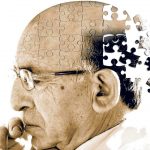 It’s estimated that around 50 million people have dementia around the world, with this number expected to rocket to 152 million by 2050. Alzheimer’s is the most common form of dementia, contributing to around 70% of cases, but there is no effective treatment for the disease.
It’s estimated that around 50 million people have dementia around the world, with this number expected to rocket to 152 million by 2050. Alzheimer’s is the most common form of dementia, contributing to around 70% of cases, but there is no effective treatment for the disease.
A team from the University of Toronto have developed an AI-based algorithm that they believe can make accurate predictions regarding the rate of cognitive decline that ultimately leads to Alzheimer’s disease.
The work, which was documented in a recently published paper, involves the algorithm learning the signatures of Alzheimer’s from magnetic resonance imaging (MRI), genetics, and clinical data. The team believe it can help to predict whether an individual’s cognitive abilities will decline sufficiently to result in Alzheimer’s within the next five years.
“At the moment, there are limited ways to treat Alzheimer’s and the best evidence we have is for prevention. Our AI methodology could have significant implications as a ‘doctor’s assistant’ that would help stream people onto the right pathway for treatment. For example, one could even initiate lifestyle changes that may delay the beginning stages of Alzheimer’s or even prevent it altogether,” they explain.
Predicting decline
The data was compiled via the Alzheimer’s Disease NeuroImaging Initiative, with the algorithm trained on data from over 800 people who ranged from healthy seniors all the way to those with Alzheimer’s disease. The results were replicated on an independently collected sample from the Australian Imaging and Biomarkers Lifestyle Study of Ageing.
The team achieved reasonable results, even with a relatively small dataset, but they’re confident that things can be made even more accurate when they train the algorithm on more data.
“We are currently working on testing the accuracy of predictions using new data. It will help us to refine predictions and determine if we can predict even farther into the future,” they explain.
The project is part of a wider body of work looking to use data to better understand and treat Alzheimer’s. For instance, I wrote last year about a project that used AI to more accurately identify the subtypes of Alzheimer’s that emerge in the early stages of the disease.
“Everyone thinks Alzheimer’s is one disease, but it’s not,” the authors say. “There are many subgroups. If you enroll all different types of people in a trial, but your drug is targeting only one biological pathway, of course the people who don’t have that abnormality are not going to respond to the drug, and the trial is going to fail.”
The authors believe that if people with similar forms of cognitive impairment are grouped together, when investigational drugs can be tested more precisely.
The team used a multilayer clustering algorithm to sort through dozens of different data points to try and find similar disease types, with data also compiled from the Alzheimer’s Disease Neuroimaging Initiative.
Both projects are a good example of how data and AI are being used to better understand and respond to diseases that have a huge impact on us as individuals and collectively as a society. It will be fascinating to see how such projects evolve in the coming years, and the impact they have.